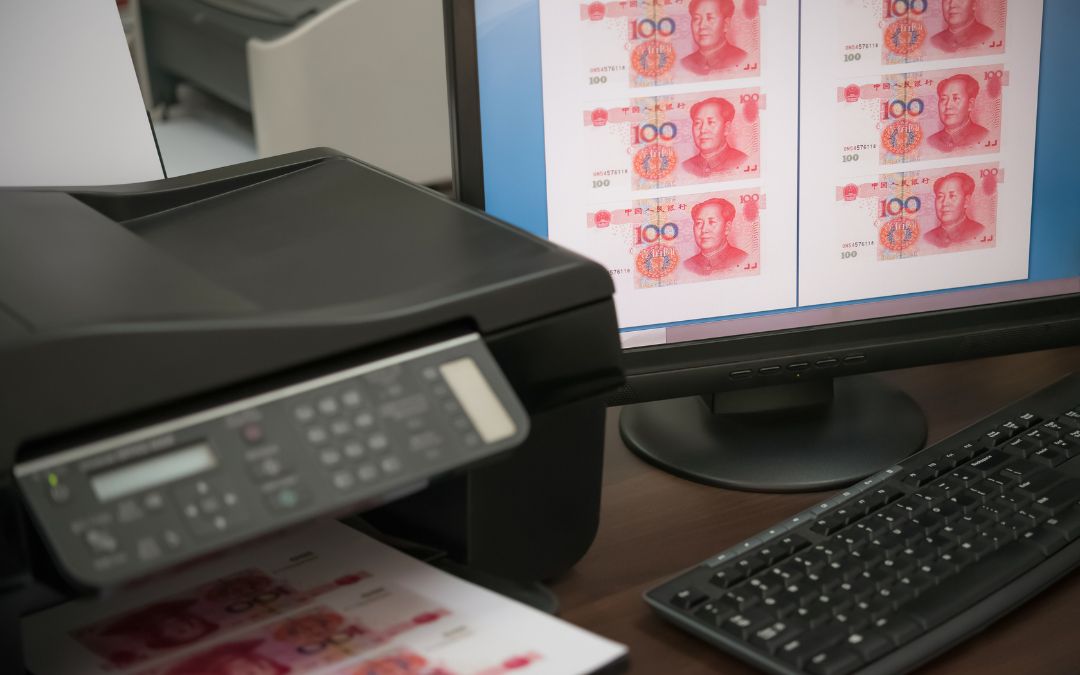Article by Richa Singh from Economics Wing, GAEE JMI
The Reserve Bank of India (RBI) prints money to finance the government’s debt. According to some analysts and business leaders, increased expenditure and additional relief measures could be achieved if the RBI increased currency printing. When the government is forced to spend more than its budgeted allocations due to a crisis, the central bank has the option of printing more money to meet the additional liquidity demand. But then there are critical questions—Why can’t a reserve bank print a plethora of currency notes and distribute them to the poor or use them to pay off debts owed to other countries?
Although it may appear to be a simple solution for a country to alleviate poverty or become wealthy, the reality is a little more complicated. Let’s talk about why printing currency is not a good idea, except in the case of deflation.
Printing money for development
Assume the RBI prints more money and the government spends it on development projects such as building a metro. To accomplish this, the government will hire workers, architects, engineers, and other professionals, as well as purchase materials and machinery from businesses.
In exchange for these services, the government will pay workers’ wages, architects’ and engineers’ salaries, and cover the cost of all goods purchased from the companies. This money will circularly flow into the economy. As a result, money will flow in the household sector, i.e., in people’s homes, hired workers’ homes, architects, engineers, employees, and factories. Further, these people will demand more goods now that they have some extra money.

A significant increase in demand due to an increase in people’s income level will raise the prices of all goods and services in the economy (because demand for goods increased while the supply of goods did not). Also, the demand for imports will rise, as will the demand for dollars (since it is the only currency accepted internationally) to pay for imports.
Thus, this will raise the value of the dollar relative to the Indian rupee, making imports more expensive. This will result in inflation, which occurs when the prices of all goods and services in an economy rise to an extremely high level. In other words, the same amount of money can now buy fewer goods, and the Indian rupee’s purchasing power will decline.

Hyperinflation & Hungary
Hungary is an extreme case in which printing more money causes hyperinflation. After World War 2 (1944), production capacity decreased due to destruction and rising prices. As a result, prices rose. Since the government had no tax bases on which to rely, it began printing money to stimulate the economy. It lowered loan rates while increasing spending.
Inflation accelerated to the point where, by 1946, prices were rising at a rate of 150,000% per day, and the value of the Pengö relative to the dollar was 1$ = 460 trillion Pengös. In Hungary, some people stopped using Pengö as a medium of exchange.
Why can’t the government just print money to pay off the nation’s debt?
Initially, I also wondered why the government couldn’t print money to pay off the country’s debt. To answer this, we must first understand the composition of a country’s debt. The majority of a country’s debt is internal debt, which is debt held by its citizens and banks in government bonds.
Thus, printing money to pay the internal debt is not an option. Also, the debt held by foreign countries is known as external debt. The government usually pays its external debt by either increasing the rate of taxes levied on its citizens or borrowing more money.
However, if the government raises tax rates, it may stifle the development of its citizens (as this will decrease their expendable income). The government either pays for the country’s foreign currency with its forex reserve or buys it from the IMF or the foreign exchange market.
On the other hand, the government cannot even print the currency to pay its external debt because doing so would increase the total supply of the Indian Rupee, with the demand for the Indian Rupee remaining constant in the global economy. This will eventually lead to the devaluation of the Indian rupee and an increase in import prices.
This is why, except in the case of deflation, printing currency is not a good idea (that too with proper precautions). The increase in national income will be purely monetary in nature (nominal). This is because printing money, or additional money has no effect on economic output. It merely causes inflation. As a result, in order to become wealthy, a country must be technologically advanced and more competitive.
A country’s economy grows by attracting more money through increased demand for locally produced goods and services. As a result, I’ll say that if money grew on trees, it would be worth as much as its leaves.

Article Summary: Printing more currency simply means increasing the amount of cash circulating in the economy, resulting in sharp inflation on the one hand and a decline in currency value on the other. While increased money creation is expected to boost demand for goods and services, it may also result in a sharp increase in inflation if economic output fails to keep pace with demand. As a result, existing goods and services will see significant price increases as demand rises, but supply remains stagnant. However, it is not always a bad thing. For instance, many wealthy countries use additional money printing to combat recession. During the COVID-19 pandemic, the US did it to make financing more easily accessible at lower interest rates. However, it has been stated that the additional stimulus must be gradually phased out due to the risk of rising inflation. This article discusses why we can’t simply print more money to alleviate poverty or finance the government’s debt.
Richa Singh is a B.A.(Hons.) Economics student at Jamia Millia Islamia, Delhi, and a part GAEE JMI, an autonomous branch of Global Association of Economics Education in India. The views expressed are personal and they do not purport to reflect the opinions or views of GAEE or its members.
Follow Us & Stay Tuned: https://linktr.ee/gaee.jmi


Recent Comments